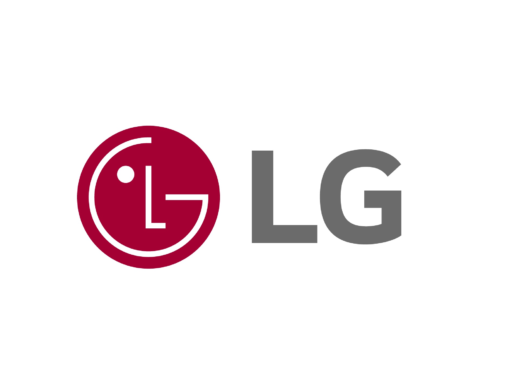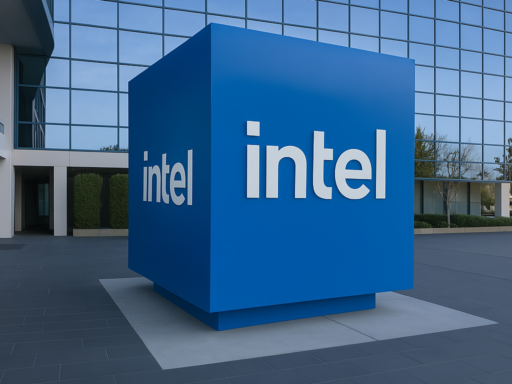Xiaomi Corporation, a Chinese multinational electronics company founded in 2010, has rapidly grown into one of the world’s leading technology firms. Known for its wide range of smart devices, including smartphones, smart home products, and IoT (Internet of Things) devices, Xiaomi is committed to providing high-quality, affordable products that improve the daily lives of consumers. Beyond its success in the consumer electronics market, Xiaomi is also focusing on sustainability and has increasingly integrated environmental considerations into its business practices.
In recent years, Xiaomi has made sustainability a core part of its long-term strategy, emphasizing energy efficiency, responsible resource management, and environmental responsibility across its global operations. As of 2024, Xiaomi continues to expand its footprint while striving to minimize its environmental impact. The company’s sustainable practices are visible in areas such as green product development, waste reduction, and energy-efficient manufacturing.
- Xiaomi has committed to achieving carbon neutrality by 2050, with a focus on reducing its carbon emissions and waste.
- The company has transitioned more than 90% of its smartphone production to renewable energy sources, reducing carbon emissions from its manufacturing operations.
- Xiaomi has partnered with several organizations to advance the recycling and reuse of electronic products and reduce e-waste globally.
Source: https://www.mi.com/global/about/sustainability
Sustainability Strategy and Goals
Xiaomi’s sustainability strategy is centered around its mission to reduce its environmental impact through sustainable practices in product design, manufacturing, and business operations. The company’s goals include carbon neutrality by 2050, aligning with global efforts to combat climate change. Xiaomi has committed to reducing carbon emissions, waste, and resource consumption through a range of initiatives focused on energy efficiency, sustainable sourcing, and the circular economy.
Xiaomi’s sustainability strategy is guided by the principle of “green innovation,” which focuses on developing products that not only meet consumer needs but are also designed with energy efficiency and recyclability in mind. The company’s product lines are continuously being optimized to use less energy during production and operation. Xiaomi is working to make its supply chain more sustainable by partnering with suppliers who align with the company’s environmental goals. The company is also reducing waste through initiatives such as recycling programs and extended product life cycles, including repairs and reuse.
Additionally, Xiaomi is investing in renewable energy and adopting green manufacturing techniques to reduce the environmental impact of its production process. The company also focuses on improving the energy efficiency of its products, such as smartphones, smart TVs, and home appliances.
- Xiaomi plans to achieve carbon neutrality by 2050 and is already reducing its operational carbon footprint by using renewable energy in manufacturing.
- The company is targeting a 30% reduction in its overall energy consumption by 2030, with a focus on reducing energy waste across its global supply chain.
- Xiaomi aims to ensure that 100% of its packaging is made from recyclable and biodegradable materials by 2025.
Source: https://www.mi.com/global/about/sustainability
Key Sustainability Innovations and Technologies
Xiaomi has focused on integrating sustainability into its core product offerings by making technological innovations that improve energy efficiency and reduce resource consumption. One of the company’s key innovations is its range of energy-efficient smart devices, which include smartphones, smart appliances, and home automation systems designed to use less power and improve efficiency. Xiaomi’s smart home products help consumers optimize energy usage, reducing both energy costs and environmental impact.
Another innovation is Xiaomi’s use of recyclable materials in its product packaging. The company has committed to using eco-friendly packaging in all of its products, which includes biodegradable plastics and paper sourced from sustainable forests. Xiaomi has also made strides in battery recycling, with efforts to improve the recyclability of lithium-ion batteries used in its smartphones and other products.
Xiaomi is increasingly focusing on reducing e-waste through its Device Recycling Program, where customers can return old devices for recycling and repurposing. This program is part of Xiaomi’s broader commitment to supporting the circular economy by reusing and recycling materials rather than disposing of them in landfills.
- Xiaomi’s smart home products are designed to use 30% less energy compared to traditional home appliances.
- The company’s packaging is now made from more than 80% recyclable materials, with plans to increase that number to 100% by 2025.
- Xiaomi has launched a Device Recycling Program in over 10 countries to promote the recycling of old smartphones and other devices.
Source: https://www.mi.com/global/about/sustainability
Measurable Impacts
Xiaomi has made substantial progress in implementing sustainable practices that have led to measurable environmental benefits. In 2023, the company successfully reduced its carbon emissions by 15% compared to the previous year through energy-efficient manufacturing and the increased use of renewable energy in its production facilities. The company’s focus on reducing energy consumption has also led to a decrease in overall energy usage in its global operations.
Xiaomi’s efforts in waste reduction have been equally impactful. By optimizing its product packaging and improving the efficiency of its logistics and supply chains, the company reduced packaging waste by 10% in the past year alone. The company is also working to extend the lifespan of its products, encouraging customers to repair and recycle their devices, which has reduced the amount of e-waste generated by its consumers.
- Xiaomi has reduced its carbon emissions by 15% over the past year, thanks to energy-efficient production practices and renewable energy adoption.
- The company has cut its packaging waste by 10% in the last year through the use of recyclable materials and optimized packaging designs.
- Xiaomi’s Device Recycling Program has collected over 5 million devices for recycling and reuse since its launch.
Source: https://www.mi.com/global/about/sustainability
Challenges and Areas for Improvement
Despite its achievements, Xiaomi faces several challenges in further reducing its environmental impact. One of the primary challenges is the environmental footprint associated with battery production and the disposal of lithium-ion batteries, which remain a key component of many Xiaomi products. While the company is committed to improving battery recyclability, the complex nature of battery production and recycling continues to be an issue for the entire tech industry.
Another challenge is scaling the company’s renewable energy adoption across its global operations. While Xiaomi has made significant progress in adopting renewable energy in its manufacturing plants, the company’s operations in some regions still rely on non-renewable energy sources, particularly in emerging markets.
Lastly, managing e-waste remains a significant challenge as the demand for electronic products continues to rise. Xiaomi must continue to promote responsible consumption through repair and recycling programs and ensure that its consumers are actively participating in these initiatives.
- Xiaomi aims to reduce e-waste by 20% by 2025 through initiatives such as its Device Recycling Program and offering repair services.
- The company plans to increase battery recycling rates by 30% over the next five years to reduce the environmental impact of battery disposal.
- Xiaomi continues to focus on expanding renewable energy usage in emerging markets, aiming for 100% renewable energy use globally by 2030.
Source: https://www.mi.com/global/about/sustainability
Future Plans and Long-Term Goals
Xiaomi’s long-term sustainability goals focus on continuing to reduce its environmental footprint while scaling its operations. The company aims to achieve carbon neutrality by 2050 and reduce its overall energy consumption by 30% by 2030. This will involve expanding the use of renewable energy, enhancing energy efficiency, and optimizing resource management across its global operations.
The company plans to accelerate its Device Recycling Program and introduce more products designed for reusability and recyclability. Additionally, Xiaomi is focusing on further improving battery recycling technologies to make its products more sustainable over their entire lifecycle. In the next few years, Xiaomi will focus on driving green innovation by integrating sustainability into its product design, packaging, and logistics.
- Xiaomi plans to achieve net-zero emissions by 2050 and reduce its carbon footprint across all areas of its operations.
- The company is working to make 100% of its product packaging recyclable by 2025 and reduce plastic waste by increasing the use of paper-based materials.
- Xiaomi aims to increase the efficiency of its smart devices by using more sustainable materials and optimizing energy consumption by 25% over the next five years.
Source: https://www.mi.com/global/about/sustainability
Comparisons to Industry Competitors
Xiaomi’s sustainability efforts are competitive with other major tech companies such as Apple, Samsung, and Huawei, all of which have committed to reducing their environmental impact and promoting sustainable product development. While Apple and Samsung have made significant strides in renewable energy adoption and sustainable product design, Xiaomi’s focus on affordable, energy-efficient products makes it a key player in making sustainability accessible to a broader global audience.
Key Competitors:
- Apple: Apple is known for its extensive sustainability efforts, including achieving carbon neutrality across its global supply chain by 2030 and using recycled materials in its products. Source: https://www.apple.com/environment/
- Samsung: Samsung has committed to achieving carbon neutrality by 2050, focusing on using renewable energy, reducing e-waste, and promoting energy-efficient devices. Source: https://www.samsung.com/us/sustainability/
- Huawei: Huawei focuses on reducing its carbon emissions and optimizing resource efficiency across its manufacturing process. It also emphasizes the use of sustainable technologies in its product lineup. Source: https://www.huawei.com/en/sustainability
- Apple is aiming for carbon neutrality by 2030 and has already achieved 100% carbon neutral operations for its corporate facilities.
- Samsung has committed to achieving carbon neutrality by 2050, with a focus on renewable energy use and reducing e-waste.
- Huawei aims to reduce carbon emissions by 50% by 2030, focusing on energy-efficient product designs and promoting sustainability in its supply chain.
Source: https://www.apple.com/environment/, https://www.samsung.com/us/sustainability/, https://www.huawei.com/en/sustainability
Our Thoughts
Xiaomi has demonstrated a clear commitment to sustainability, with ambitious goals to reduce its carbon footprint, increase the use of renewable energy, and improve the recyclability of its products. By focusing on energy-efficient products and expanding its device recycling efforts, Xiaomi is positioning itself as a leader in the tech industry’s transition to a more sustainable future.
While challenges remain, particularly in scaling renewable energy adoption globally and improving battery recycling, Xiaomi’s comprehensive sustainability strategy provides a model for other tech companies. As the company continues to grow and innovate, its focus on sustainability will play a key role in shaping the future of the consumer electronics industry.






